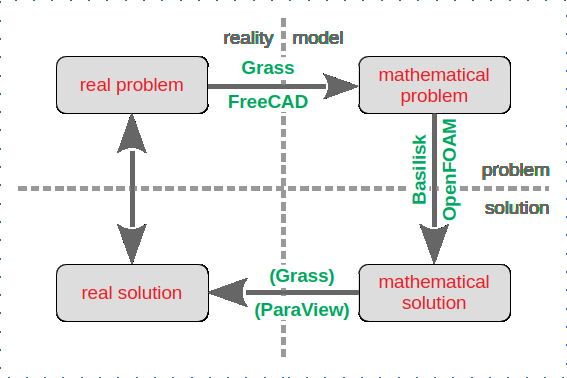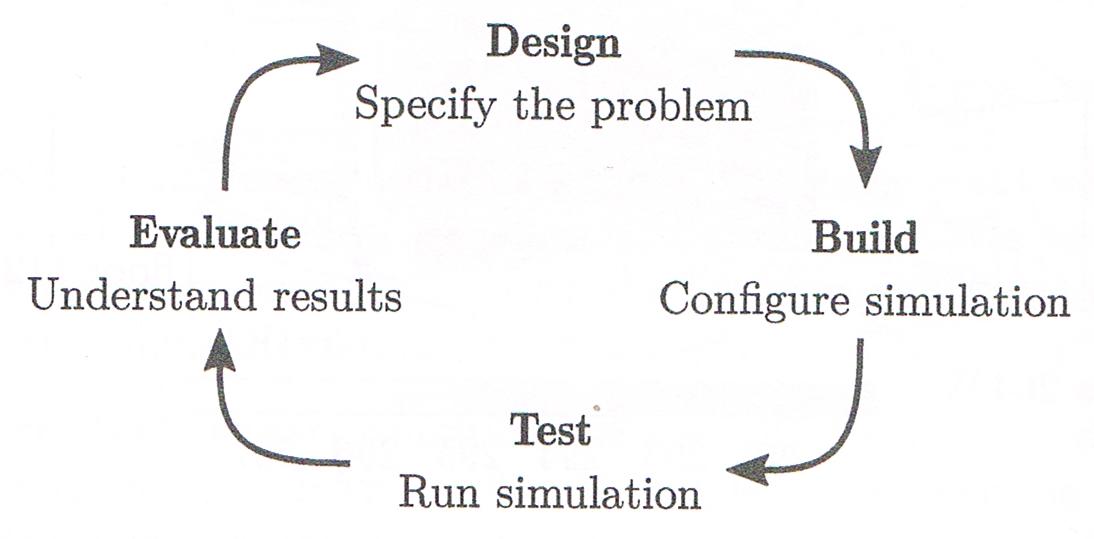The "E" of EIF-services refers to its Engineering capabilities in the area of fluid mechanics. The main tool for this purpose is numerical modeling using Basilisk, a software suite which enables one to model industrial as well as environmental fluids. Basilisk being rather research oriented, EIF-services supplements its offer with OpenFOAM, which provides state-of-the-art numerical modeling for industrial fluids.
However, engineering related activities in Computational Fluid Dynamics needs auxiliary software when dealing with real problems (as opposed to schematic configurations). Thus EIF-services relies on the following free software:
The following diagram describes the interaction between the three tools:

The diagram above contains four areas separated by the "problem/solution" and "reality/model" boundaries. One always starts with a real problem (top left), which first needs to be translated into mathematical terms (top right). As far as fluid mechanics are concerned, this task usually amounts to specifying the "initial" and "limit" conditions in a format compatible with the numerical tool (Basilisk and/or OpenFOAM), using the CAD/GIS software already mentioned (unless the Client provides suitable formats).
Once the modeled problem has been solved (using Basilisk and/or OpenFOAM), one will have to translate the mathematical solution back into real terms, which may involve visualization tools (depending on the questions asked). Eventually, an interaction with the problem stated at the onset is necessary in order to check that the proposed solution:
- does answer the questions asked (compute the relevant quantities);
- is compatible with what was already known before the study (bibliography);
- is qualified using some sort of error bar:
- study the sensitivity to numerical parameters;
- calibrate/validate the model using real world data (when available).
The modeling process can not be automated from start to end [*], hence the EIF-services expertise adds value to the modeling cycle each time a reality/model or problem/solution boundary is crossed.
Here is an analogous drawing found in Notes on Computational Fluid Dynamics: General Principles (Greenshields and Weller, 2022):

Finally, let us mention that the Basilisk configurations developed for the study will be delivered to the Client, who may then run the model on his own (at the end of the study), after optional phases of computer set up and operator training which may be included in the contract (thereby involving the other activities of EIF-services).
[*] Despite the enthusiasm on this subject, the technological monitoring carried out to date has not convinced us of the added value of artificial intelligence in CFD: it is necessary to build a database with many simulations, ensure a priori that no dynamic transition is crossed (non-linear systems, etc.): see for example chapter 3 (pp. 18-19 and 25-26) of Approaching Machine Learning Problems in Computational Fluid Dynamics and Computer Aided Engineering Applications (Justin Hodges, 2024).
